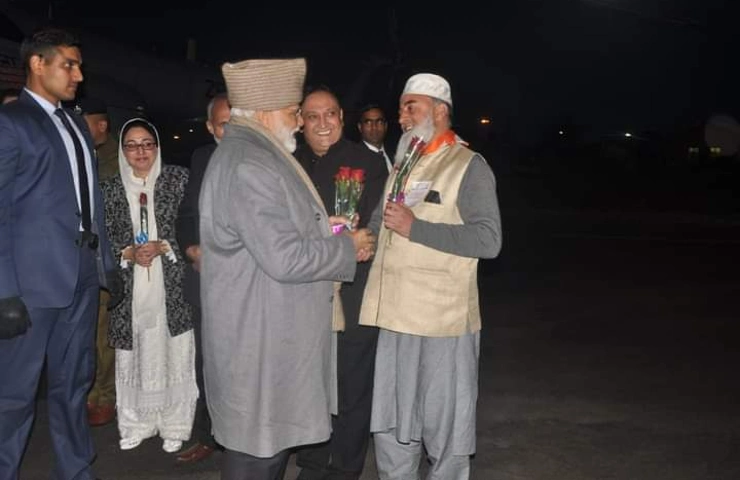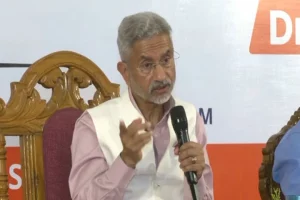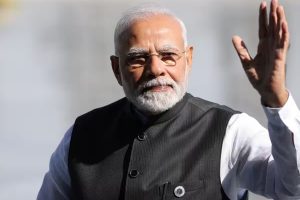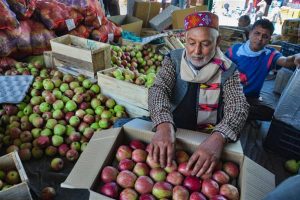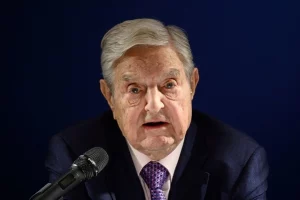When scores of militant outfits with thousands of well-equipped cadres had created ‘liberated zones’ across the Kashmir valley and the most formidable group Hizbul Mujahideen’s ‘supreme commander’ was holding the fortress in close vicinity of the Army’s divisional headquarters in 1992-93, a nondescript BJP activist was studying and surveying separatism. He stayed at the Hizbul chief Salahuddin’s residential village of Soibug in Budgam district and met with the people. The black-bearded 43-year-old man’s name was ‘Narendra Bhai Modi’.
Nobody imagined that the same man, who met hundreds of people in all the six districts for six days of his visit and took notes as a ‘social worker’, would become Gujarat’s Chief Minister in eight years and subsequently India’s Prime Minister in 21 years.
“He was a teetotaller and a total vegetarian who wouldn’t touch even an egg or fish. As our taxi passed the Shariefabad camp (headquarters of 8 Mountain Division) and he (Modi) saw some soldiers angling for fish in a stream, he asked the driver to stop. We went down and enjoyed the scene for a while after a brief interaction with the troops. They didn’t inquire about his domicile. He didn’t reveal either. Soon we reached our destination—my ordinary house at the Hakermulla village, near Soibug”, Mohammad Ashraf Hajam aka Azad revealed to India Narrative. For two days, Modi stayed at Azad’s house.

Kashmiri BJP party member Ashraf Azad speaks with India Narrative
According to Azad, it was the spring of 1993 when he accompanied Modi in a taxi without the knowledge of the authorities and Police and without any security cover to dozens of villages in Kashmir’s six districts.
“We went to the top militant strongholds of Soibug in Budgam and Zoonarishi in Kupwara. We also visited Dargah Hazratbal, Jamia Masjid and many places in Srinagar. We went inside the University of Kashmir campuses where he chatted with the teachers and students. He introduced himself ‘a social activist from our own Jammu Kashmir,’—some took him as a sympathiser from Jammu— listened to everybody with patience and took extensive notes without arguing with anybody”, Azad said.
At Sahalhuddin’s Soibugh, Modi interviewed the village elders Haji Mohammad Ismael Bhat, Haji Noor Mohammad Malik, Haji Ghulam Qadir Bhat and several others. He interacted with scores of women, children and youths some of whom were inclined to become or later became militants. He asked them about the reasons for their alienation from India and their political aspirations. “Some said nothing short of azadi would be acceptable to the Kashmiri. Some wanted development, education and jobs”, Azad recollected.
How did Azad get in touch with the then anonymous BJP activist Modi?
“I was a 24-year-old in 1992, making my living out of siphoning LPG from big to small lighting cylinders and selling the same in retail. Only I in the whole village had a television which I had purchased for watching ‘Hazaar Dastaan’ (a popular political satire series on Doordarshan Kendra Srinagar in 1988). We watched the BJP President Murli Manohar Joshi announcing to terminate his nationwide Ekta Yatra in Srinagar. He announced to hoist the Indian national flag at the clock tower at Lalchowk on the Republic Day of 26 January. The militant groups said it would happen only over their dead bodies. As the tensions escalated, I decided to walk down and see who of the Indians had the guts to hold the tricolour in Srinagar”, Azad narrated.
“There was a mixture of tension and excitement. Those were the days when militants would carry out attacks at any place with LMGs and rocket launchers. As Joshi ji and his associates hoisted the flag with slogans, I too got excited and saluted the flag. Suddenly, a black-bearded man held my arm and asked about my antecedents. He was thrilled to know that at least one Kashmiri Muslim had joined his group. He took me in his vehicle to Nehru Guest House where he introduced me to Joshi ji and others of his team. They asked me if I would like to work for peace and welfare of Kashmir’s youths and come to Delhi with them. I agreed. At the guest House, the black-bearded man said that his name was Narendra Modi”, Azad revealed.
Azad said that in New Delhi Modi took him to the senior BJP leader Atal Behari Vajpayi who inspired him to work for Kashmir’s peace and development. “Soon I began working under the banner of the Peace Council. The BJP helped me get a safe government accommodation at IMPA in Srinagar. Over a year later, someone from Circuit House came to my IMPA accommodation and told me that a guest from Delhi was looking for me. I went to the Circuit House where I was thrilled to see back Narendra Bhai. We hugged each other. He revealed his plan of meeting people in all six districts of the valley”, Azad narrated. He continued his connection with the village.
In 1996, Azad joined politics and campaigned for the BJP candidate from Srinagar-Budgam Lok Sabha constituency. Later in 1996, 2002 and 2008, he contested the Assembly elections on BJP’s ticket from Budgam. He also contested the elections for Block Development Council and District Development Council in 2019 and 2020, losing all.
“I didn’t get a senior position or anything material for me or my family but I am relieved that the mission we started in 1992 has been accomplished to a great extent. I beseeched the people of my Soibugh area to hate violence and forget about Salahuddin, who was in the village and left for Pakistan later in 1993. This village, which was the seat of Hizbul Mujahideen’s influence, donated 155 kanals of land free of cost on my request for Degree College, Sub District Hospital, Tehsil Office and Azad Bharat Stadium. A football playfield is coming up at Daharmuna”, Azad said.
Azad said that he met Modi several times before and after becoming Chief Minister of Gujarat and Prime Minister of India. “In Srinagar too, we met a number of times. Every time we meet, he asks me about my family, neighbours and other residents of the area. I am sure no Indian politician matches Narendra Modi’s ground knowledge about Kashmir and its political conflict. It was not for nothing that he once told Chief Minister Mufti Sayeed at the public meeting in Srinagar that he didn’t need anybody’s advice on Kashmir”, Azad said.
Azad’s last meeting with Modi happened on the Prime Minister’s arrival from Leh at the Srinagar airport on 3 February 2019—eleven days before the infamous Pulwama blast and months before the Lok Sabha elections.
Also Read: How Republic Day unfolded in Kashmir 30 years after Modi hoisted tricolour at Lalchowk in Srinagar






